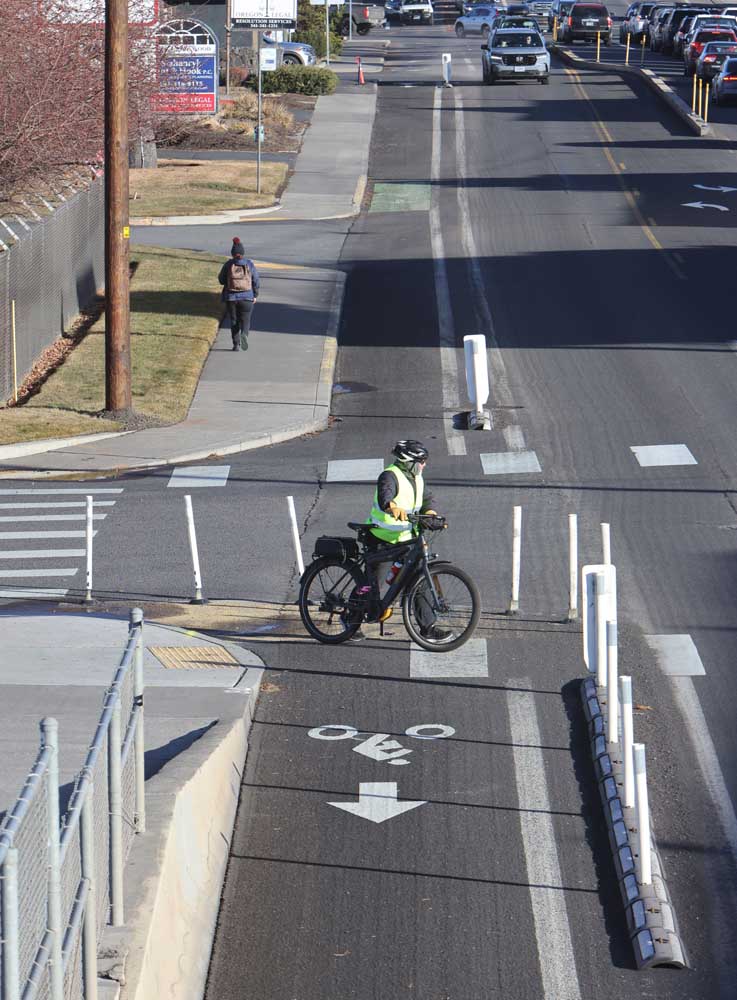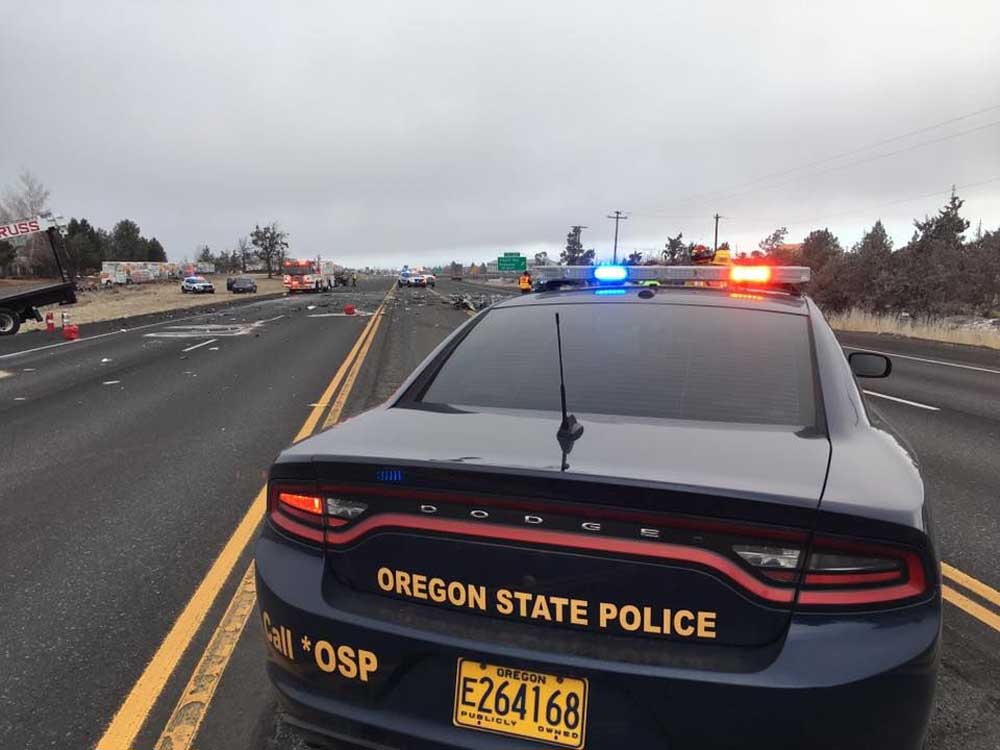Bend still divided on Greenwood Avenue ‘road diet’
Published 5:45 am Saturday, December 21, 2024

- Cyclists and pedestrians travel along the redesigned Greenwood Avenue in Bend.
More than half of the 830 people responding to a survey about the city of Bend’s Greenwood Avenue “road diet” said they didn’t care for the new design, giving it a one or two-star rating out of five, with negative reactions ranging from lambasting of the city’s “war on cars” to critiques that the new road still isn’t safe enough for bicycles and pedestrians.
About 41% said the design was either good or great, giving it a four or five star rating, with both car and bicycle users expressing satisfaction and comfort with the new turn lane and ample room to drive and ride through the formerly harrowing Greenwood underpass.
About 5% took the middle ground and said the new design was “OK.”
Initial monitoring shows bicycle traffic has increased, while the number of cars using Greenwood — and their speeds — have ticked down and travel times bumped up.
Both the survey and traffic monitoring are ongoing. Initial results constitute the first third of a yearlong evaluation of the key east-west thoroughfare to help the city decide if the dramatic changes will become permanent.
During two weeks in August the city completed a “quick build” construction project on Greenwood Avenue from Wall Street to Second Street, paring down car lanes from four to two and removing 31 parking spaces while adding buffered bike lanes and a turn lane. While the evaluation continues, the redesigned street will serve as a main east-west route during the Franklin Avenue safety project construction next year.
Greenwood Avenue plan: Half the parking and car lanes, but better safety
Studies have shown that those types of changes can reduce crashes by 19% to 47%.
Both roads, which connect downtown and midtown Bend by crossing underneath the Bend Parkway and Burlington Northern Santa Fe Railway, are part of the city’s Midtown Crossing’s Project, a package of projects to improve bicycle and pedestrian mobility across the barriers.
Positive responses turned negative
The general sentiments of survey respondents appear to have swayed from majority positive to majority negative as time moves on. In a feedback summary posted to the city’s website, 64% of the first 116 respondents had a favorable opinion of the Greenwood changes, with more than half of all respondents giving five stars.
“My work is close to Greenwood so I drive on it daily,” one respondent said in August. “I love the new turn lane, and the one lane of traffic makes turning onto Greenwood easier than before. I haven’t noticed any negatives or it impacting traffic as I commute during normal ‘rush hour’ times.”
“It’s not working better,” another respondent said in October. “Vehicle traffic is much slower and backs up all the way down Newport Avenue and down Greenwood at peak busy times. The median islands make it more difficult to see pedestrians during high traffic times. There are no warning or flashing lights to push to indicate pedestrian crossing at non-traffic light intersections.”
Some cyclists, who advocated earlier this year for a protected bike lane rather than one next to the road, reported hazardous points of conflict and interactions with cars crossing and parking in the bike lane. Others said biking east through the underpass feels safe until the intersection with Second Street, where the bike lane ends. The city said it plans to coordinate with the Oregon Department of Transportation for improvements there.
Bend sticks to snow plowing priorities, but with new tools
Other respondents lamented the loss of parking, echoing concerns from a community theater that warned the city council in July to change course for fear it would limit attendance.
Todd Johnson, the city’s lead engineer for midtown crossings, said it’s possible nearby road closures causing long queues of cars west of Wall Street could have affected people’s views of the Greenwood project.
Before-and-after data
Most pedestrian activity is west of Hill Street, closer to downtown. In that area, pedestrian traffic decreased by 42% after the Greenwood quick build, dropping from 474 to 276 average daily pedestrians.
Johnson said the large construction site at the Deschutes County Courthouse has blocked pedestrians in the area.
Anywhere from 24% to 64% more bicycles are using Greenwood since the bike lanes were put in.
On average, about 3,000 fewer cars per day used the road post-construction, about a 20% drop.
The most significant drop in cars came during rush hour.
“What the change to going to two lanes of travel does is it really flattens that peak,” Johnson said. “It sets the carrying capacity for the roadway.”
Parallel corridors — Franklin, Olney and Revere — saw a small bump in traffic after Greenwood’s makeover.
The data is based on a study from Kittelson & Associates, a transportation engineering firm. The firm took data from a two-day period in May, before the Greenwood construction, and compared it to a two-day period in September, after construction.
Average speeds dropped by two to four miles per hour, according to the study.
To track travel times through the corridor, the study used two different models: one based on historical travel data from Google, which showed a slight decrease in travel time, and another based on real-time travel data, which showed travel times increased after construction by 12 to 14 seconds, or about 15%.
The latter model is likely a more accurate measurement of the current conditions on Greenwood, said Matt Kittelson, who led the study.
“It’ll be interesting to see how trends change over time,” he said. “We have more data collection points along the way.”
Bend transportation plan looks to accommodate 40,000 more people
The model shows that after construction, trips through Greenwood during rush hour were 19-24 seconds longer on average.
How the new design will perform during summer’s busiest months is yet to be studied. The city projected earlier this year travel times would increase by one minute.
Consultants and the city will produce a second report in March 2025, followed by a final report in early summer.
Johnson said the city still has a lot of room to shift design after the evaluation.







